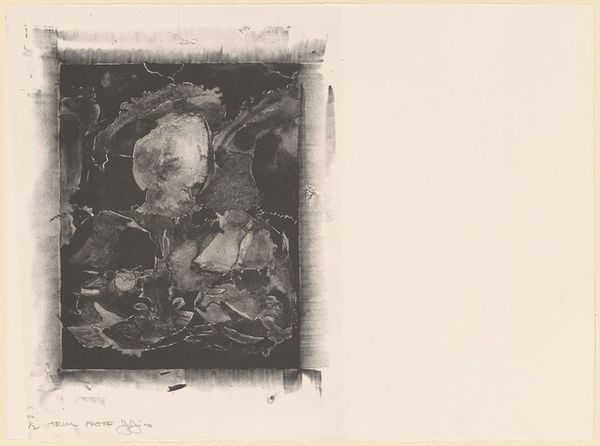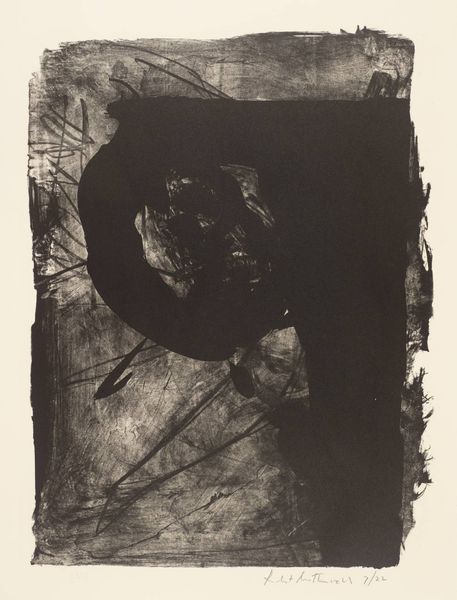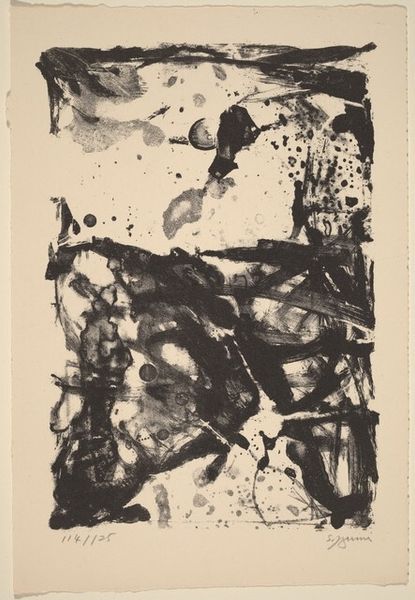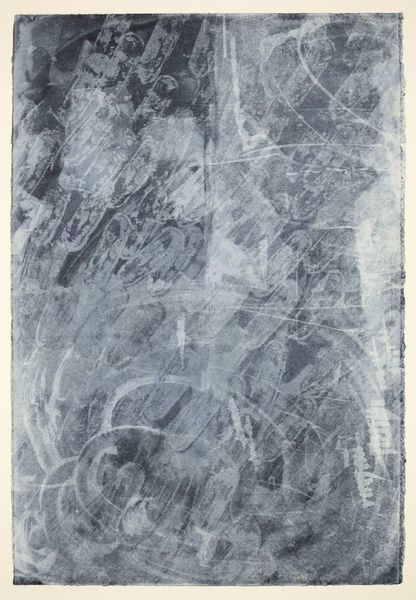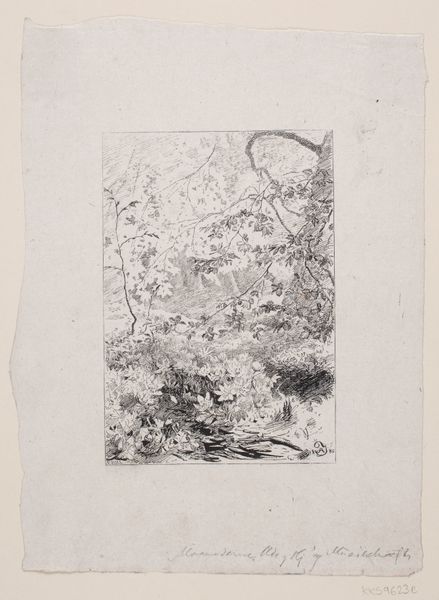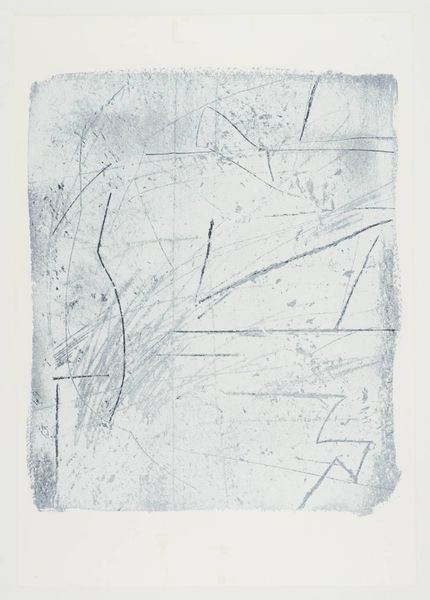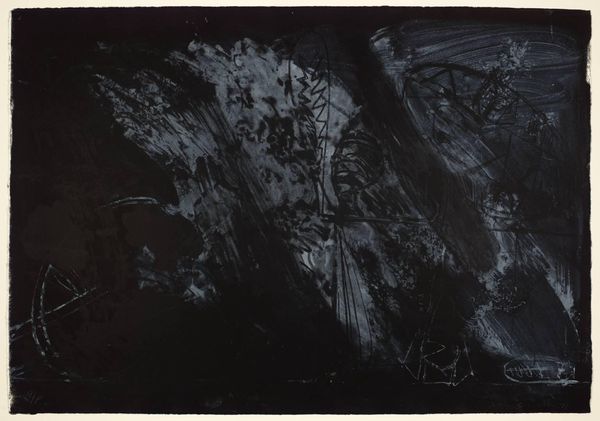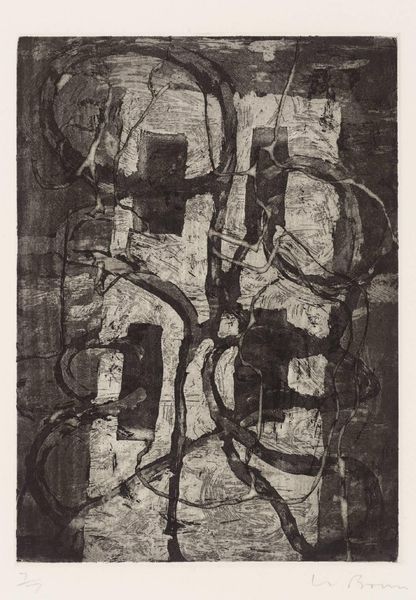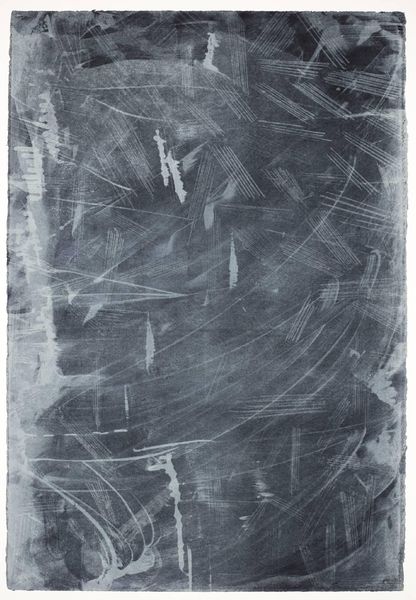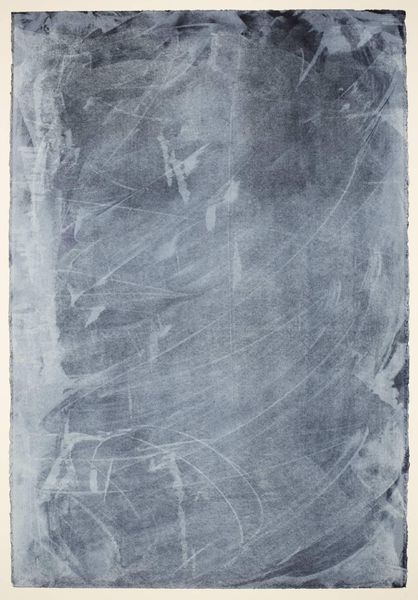![After Holbein (In Portfolio Artists against Torture) [trial proof] by Jasper Johns](/_next/image?url=https%3A%2F%2Fd2w8kbdekdi1gv.cloudfront.net%2FeyJidWNrZXQiOiAiYXJ0ZXJhLWltYWdlcy1idWNrZXQiLCAia2V5IjogImFydHdvcmtzLzBjZjQyNjc4LTNlNmMtNDcxNS05Zjc1LWZhMzljODc1MzU3MS8wY2Y0MjY3OC0zZTZjLTQ3MTUtOWY3NS1mYTM5Yzg3NTM1NzFfZnVsbC5qcGciLCAiZWRpdHMiOiB7InJlc2l6ZSI6IHsid2lkdGgiOiAxOTIwLCAiaGVpZ2h0IjogMTkyMCwgImZpdCI6ICJpbnNpZGUifX19&w=1080&q=75)
After Holbein (In Portfolio Artists against Torture) [trial proof] 1993
0:00
0:00
graphic-art, print, monoprint
#
graphic-art
# print
#
monoprint
#
neo-dada
#
abstract-art
#
abstract art
Dimensions: sheet: 50.8 x 41.59 cm (20 x 16 3/8 in.)
Copyright: National Gallery of Art: CC0 1.0
Curator: My first impression? Eerie, a little unsettling. Like looking at a fragmented memory struggling to surface. Editor: We're looking at "After Holbein (In Portfolio Artists against Torture) [trial proof]", a monoprint made by Jasper Johns in 1993. It's an abstract piece, part of a larger portfolio of artworks protesting torture. Curator: Torture, huh? That definitely adds another layer. I see it now—that struggling feeling. All these broken shapes, it is a like body that has been abused. Editor: Johns was deeply engaged in political and social issues, and often used his art as a form of activism. The “Artists Against Torture” portfolio, as the name suggests, engaged numerous contemporary artists and raised awareness about human rights violations. Holbein also portrayed the violence, brutality and injustice during Reformation. Curator: So Holbein, like in Hans Holbein the Younger? The portrait guy? How does that tie in? I see something maybe face-like in the middle… or am I just imagining things? Editor: No, you're onto something. Holbein's portraits often conveyed a certain psychological depth, and Johns here seems to be playing with that. Perhaps the distortion, the obscuring of the face, is meant to evoke the dehumanizing effects of torture. Curator: It's fascinating how Johns uses abstraction to hint at something so deeply human, and so awful. Usually I see abstract art as, well, abstract, divorced from real life in some way, but not here. Editor: The "trial proof" designation is interesting too. It highlights the artistic process, the way the artist experiments and refines their vision, adding to this sense of fragmentation that pervades. Curator: Fragmentation—exactly! It's like the whole piece is a puzzle, with some of the pieces missing, representing missing memories or loss of dignity. Knowing what the series stood for makes me appreciate the print a whole lot more. It transforms what I found initially unsettling to actually seeing it in a far deeper, and much more relevant, perspective. Editor: Yes, understanding the historical and political context adds layers of meaning to what might initially appear as simply an abstract image. Thanks for sharing that shift with us, the value that context brings.
Comments
No comments
Be the first to comment and join the conversation on the ultimate creative platform.
